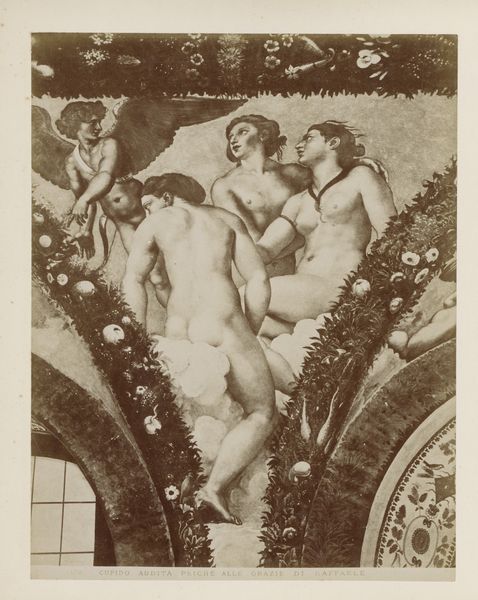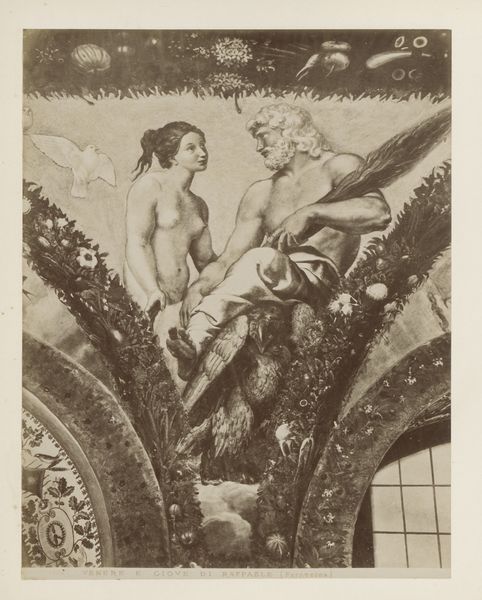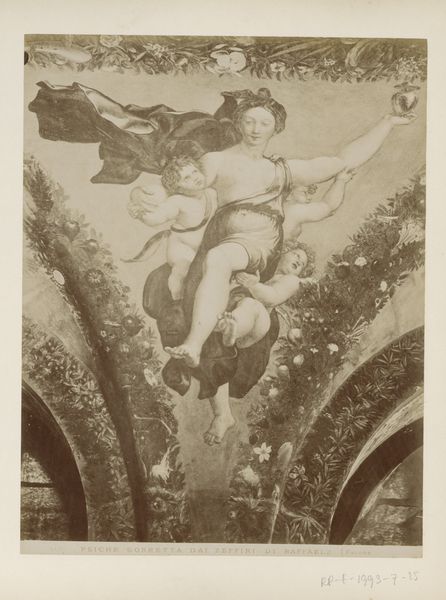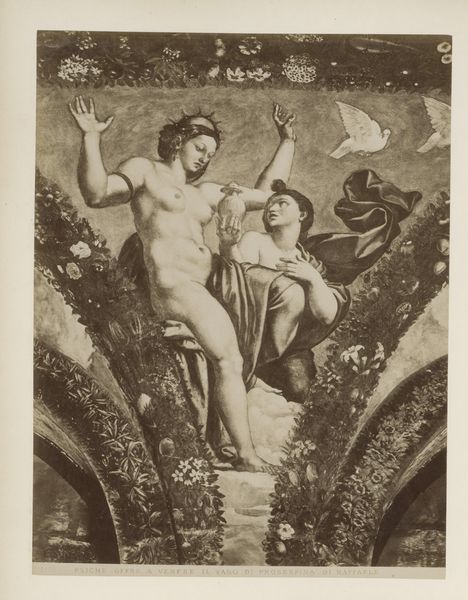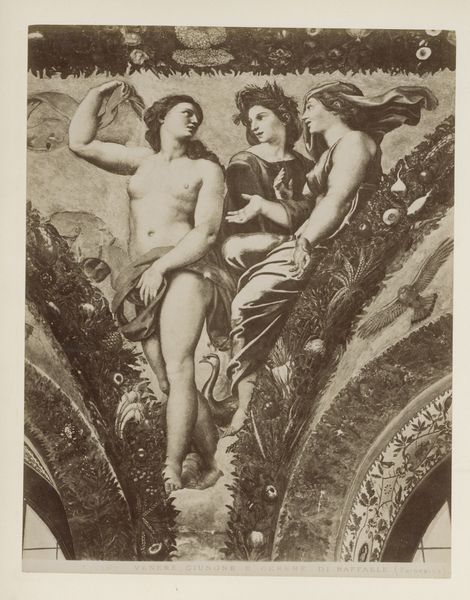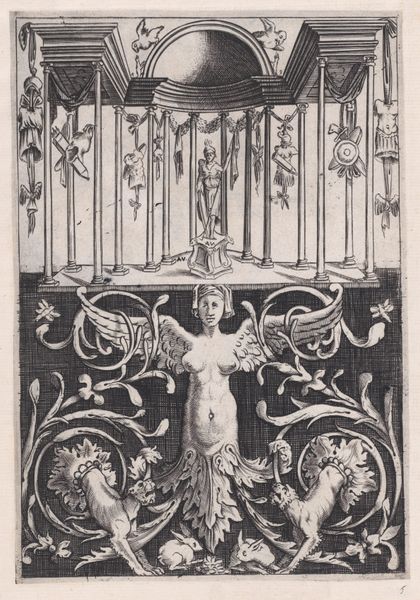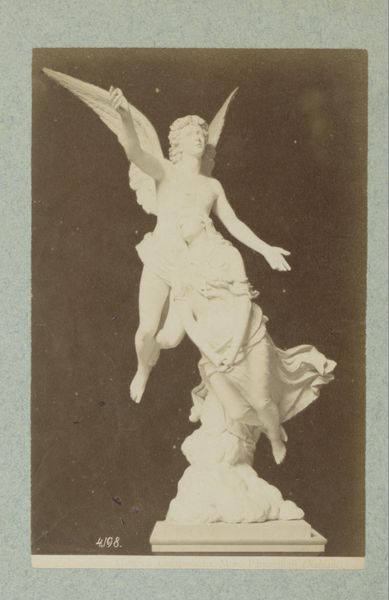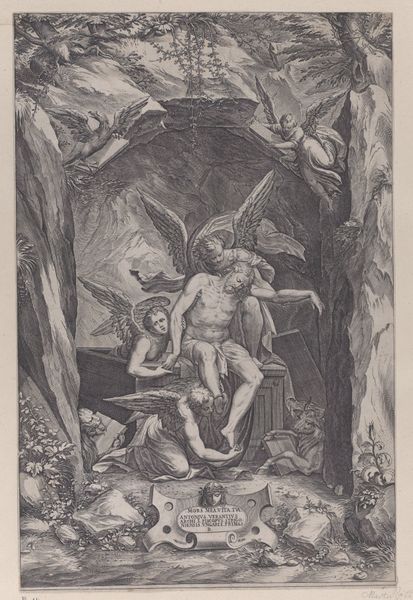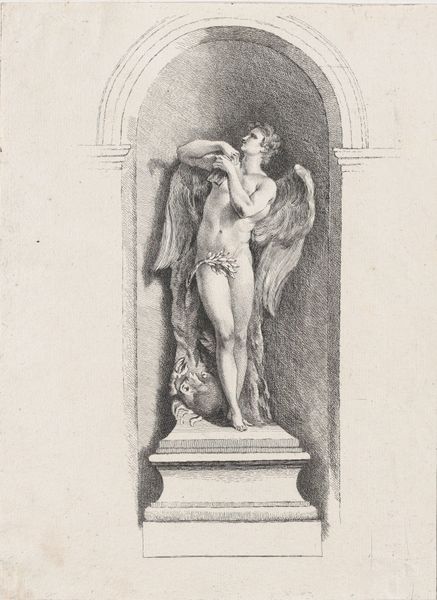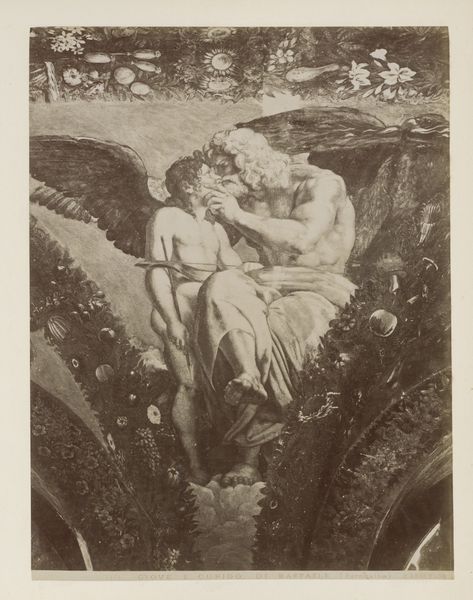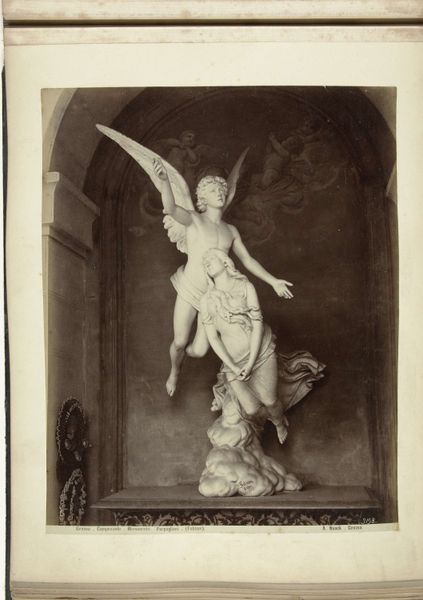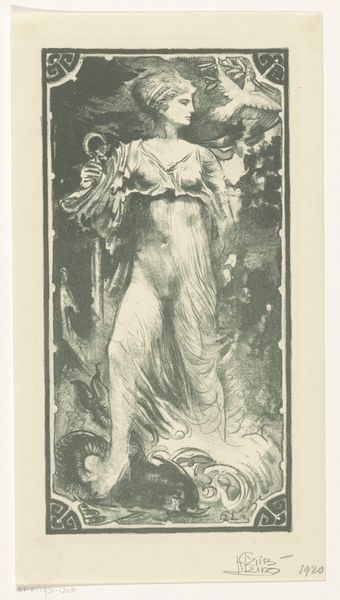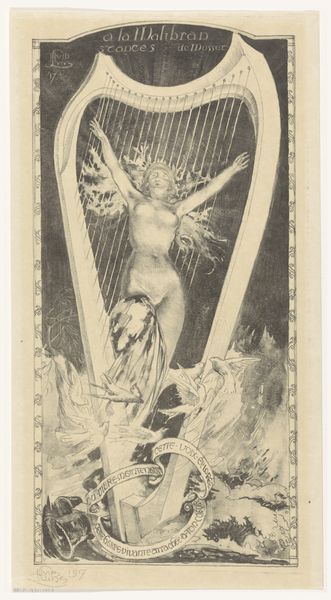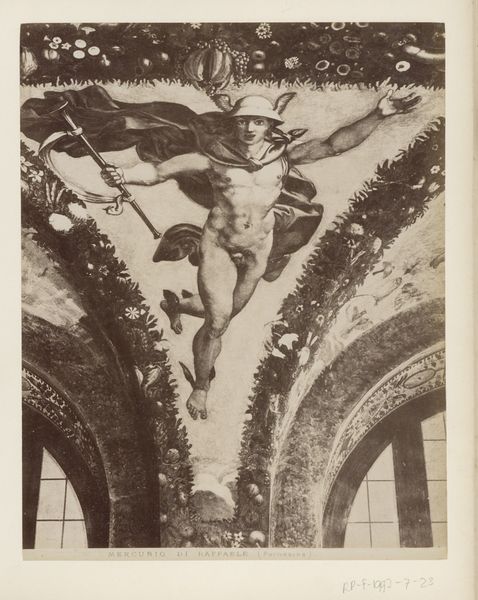
Fotoreproductie van fresco Venus begeeft zich naar de Olympos, door Rafaël in het Farnesina te Rome c. 1870 - 1890
0:00
0:00
photography, gelatin-silver-print
#
allegory
#
figuration
#
11_renaissance
#
photography
#
gelatin-silver-print
#
history-painting
#
nude
Dimensions: height 260 mm, width 204 mm
Copyright: Rijks Museum: Open Domain
Curator: What strikes me most immediately is the powerful sense of ascension, both physical and metaphorical, communicated through the photograph. Editor: This gelatin-silver print from around 1870-1890 by Domenico Anderson offers a view of Raphael’s fresco, “Venus Goes to Olympus,” originally in the Farnesina in Rome. It captures a moment of divine movement. Curator: The central figure, presumably Venus, has this billowing fabric around her that feels less like mere clothing and more like wings, alluding to transformation and aspiration. Notice the upward gaze, suggesting purpose and destiny, reinforced by the chariot rising amidst floral adornments. The doves reinforce this theme, their whiteness emphasizing purity and divine purpose. It feels aspirational and triumphant, a depiction of realized potential. Editor: Indeed. And look at how the photograph itself plays with tonal range; Anderson seems to have deliberately chosen a process that softens details, giving the whole image a dreamlike quality. The light and shadow are balanced to give form to the volumes of the chariot wheels, emphasizing both depth and movement, which seems crucial for such a narrative of celestial journey. The arch gives it an illusionistic, architectural quality, reinforcing this concept. Curator: This choice also speaks to the artistic sensibility of the time, where photography was both a tool for documentation and an art form. This highlights the Renaissance interest in classical mythology and its continuous reinterpretation. Venus embodies ideas about beauty, love, and power. Placing her ascent in the context of Olympus signifies cultural continuity and idealization of antiquity. The chariot, driven by doves, links pagan symbolism with a persistent narrative framework that resonates even today. Editor: It certainly does prompt reflection on our relationship with those narratives, Domenico Anderson’s photograph manages to offer us more than just a recording; it also invites us to observe and study both art and the passage of time in understanding how these elements play with perspective and the idea of elevation on different dimensions. Curator: Very well said. It invites reflection on artistic interpretation and symbolic communication that extends far beyond its initial Renaissance context.
Comments
No comments
Be the first to comment and join the conversation on the ultimate creative platform.
